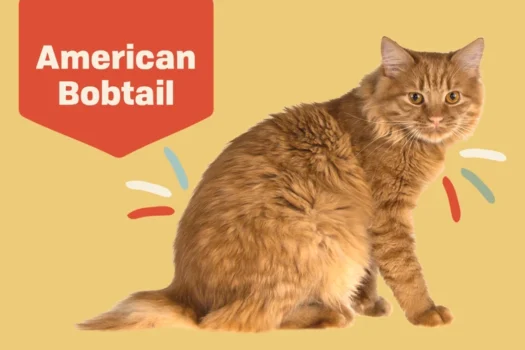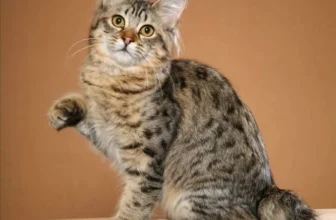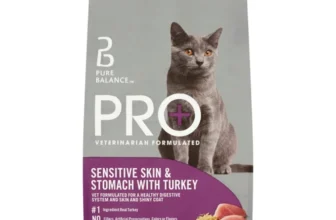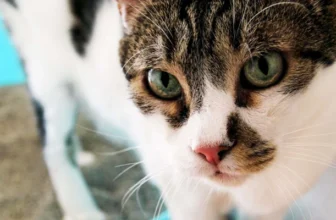As a proud owner of an American Bobtail, you may be wondering about their dental health. Keeping your furry friend’s teeth healthy is just as important as ensuring they have enough food and water. However, dental problems in American Bobtails are not uncommon, and poor dental hygiene can have a significant impact on their overall health. In this article, we will cover the most common dental problems in American Bobtails and provide you with some practical tips on how to keep your feline friend’s teeth healthy and strong for years to come. So let’s dive in and learn everything you need to know about preventing and treating dental problems in your American Bobtail.
Why Dental Health is Important for American Bobtails

Maintaining good dental health is essential for American Bobtails, as poor oral hygiene can lead to a variety of health problems. Neglecting dental care may result in tooth decay, gum disease, bad breath, and more serious conditions such as infections or tooth loss. Additionally, dental problems can cause your furry friend to experience pain, discomfort, and difficulty while eating, which can have a negative impact on their overall wellbeing. Taking care of your American Bobtail’s teeth and gums is crucial for their happy and healthy life. In the following sections, we will explore common dental problems in American Bobtails, ways to prevent them, signs to look out for, and available treatments. To learn more about why dental health is crucial for American Bobtails, and the best techniques to maintain it, check out our American Bobtail Teeth Care Tips.
Common Dental Problems in American Bobtails
Maintaining good dental health is crucial for the overall health and well-being of American Bobtails. However, despite the importance of dental care, many cat owners overlook this aspect of their cat’s health. Here are some of the most common dental problems in American Bobtails:
- Gingivitis: Gingivitis is a common dental problem in American Bobtails. It is characterized by inflammation of the gums, which can be caused by food particles and bacteria that accumulate along the gum line. If left untreated, gingivitis can progress to periodontitis, which can cause serious tooth decay and even tooth loss.
- Tooth decay: Tooth decay is another common dental problem in American Bobtails. This is caused by the buildup of bacteria on the teeth, which produce acid that damages the tooth enamel. Over time, this can lead to the formation of cavities and other dental issues.
- Periodontitis: Periodontitis is a severe form of gingivitis that affects the entire tooth structure, including the roots. This condition can cause severe pain and discomfort and can even result in the loss of teeth if left untreated.
- Bad breath: Bad breath, also known as halitosis, is a common issue that affects many American Bobtails. Bad breath can be caused by a variety of factors, including poor dental hygiene, diet, and underlying medical conditions.
- Oral tumors: Although it is relatively rare, oral tumors can occur in American Bobtails. These growths can be benign or malignant and can cause a range of dental issues, including tooth loss, bleeding, and difficulty eating.
It is important to note that many of these dental problems can be prevented through proper dental care and regular veterinary checkups. To learn more about dental health in American Bobtails, check out our guide to dental health in American Bobtail cats.
How Poor Dental Health Affects Your American Bobtail’s Overall Health
Poor dental health can have a serious impact on your American Bobtail’s overall health. Ignoring dental hygiene can lead to a wide array of problems that can affect your cat’s quality of life. Here are some ways in which neglecting your cat’s oral health can affect them:
- Periodontal Disease: This is a bacterial infection in the gums and tissues surrounding the teeth. If left untreated, it can damage your cat’s teeth and even spread to other parts of their body. Periodontal disease is one of the most common dental problems in cats.
- Pain and Discomfort: Dental problems in American Bobtails can cause pain and discomfort, making it difficult for them to eat, drink, and play. Cats are experts at hiding pain, so it’s important to pay attention to changes in behavior or routine that might indicate they are in distress.
- Difficulty Eating and Digestive Issues: Painful teeth and gums can also cause your cat to change their eating habits, which can lead to digestion problems and malnutrition.
- Higher Risk of Other Health Issues: Poor dental hygiene in American Bobtails can also raise the risk of other health problems, such as heart disease and kidney problems.
It is important to take good care of your American Bobtail’s teeth and gums in order to prevent these issues from occurring. Regular visits to the vet, daily brushing and flossing, and a proper diet are all important factors in maintaining good dental hygiene in your cat. Additionally, dental toys and treats can help keep your cat’s teeth clean and healthy. For more information on how to care for your American Bobtail’s teeth, check out our American Bobtail Teeth Brushing Guide, 5 Best Dental Toys for American Bobtail Cats, and Best Cat Food for Bobtail Dental Health articles.
Ways to Prevent Dental Problems in American Bobtails
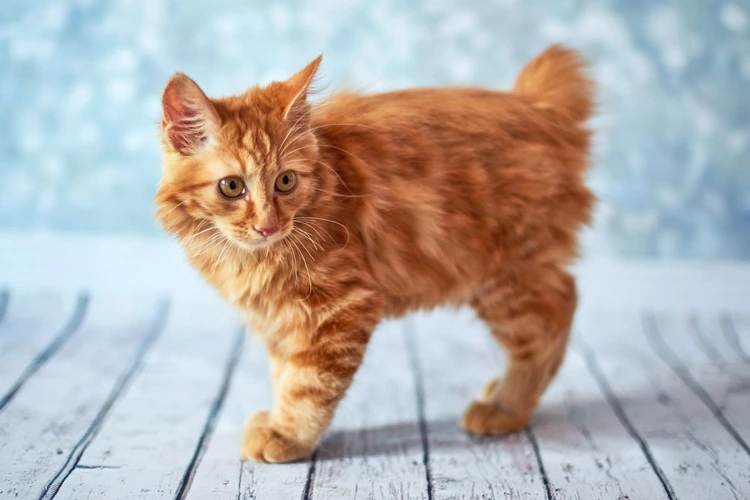
Ensuring good dental health for your American Bobtail is crucial in keeping them happy and healthy. There are several ways to prevent dental problems that can affect your furry friend’s well-being. The good news is that preventing dental problems in your American Bobtail is relatively easy and can also save you money in the long run. Let’s take a closer look at some of the preventive measures you can take to keep your American Bobtail’s teeth and gums healthy. Don’t miss out on our Dental Treatments for American Bobtails article for more information on specific treatments available for your furry friend’s dental issues.
Daily Brushing and Flossing
Maintaining good dental hygiene is a key preventive measure to help keep American Bobtails away from dental problems. Daily brushing and flossing is an excellent way to ensure your furry friend’s teeth and gums remain healthy. Brushing your cat’s teeth daily removes plaque and tartar buildup that can lead to gum disease and tooth decay. It also eliminates the bacteria that lead to bad breath, preventing further health issues.
Brushing your American Bobtail’s teeth:
- Pick a time of day when your cat is relaxed, like after a meal or a nap.
- Choose a soft-bristled brush that is specifically made for cats. Do not use human toothpaste, as it is harmful to cats. Instead, use a toothpaste that is specially designed for cats.
- Place a small amount of toothpaste on the brush and allow your cat to lick it off, so she becomes familiar with the taste.
- Gently brush the teeth with the brush at a 45-degree angle, using circular motions. Start with the canine teeth and then move on to the rest of the teeth.
- Conclude the process with a treat or favorite toy to reinforce a positive experience.
Flossing your American Bobtail’s teeth:
- Wrap a piece of floss around your finger and gently insert it between the teeth. You can also use a cat-specific dental floss.
- Move the floss back and forth, being careful not to hurt the gums.
- After flossing, rinse your cat’s mouth with a cat-specific dental rinse.
By incorporating daily brushing and flossing into your cat’s routine, you can help prevent dental problems, such as tartar buildup, gum disease, and tooth decay. Additionally, regular dental checkups with your veterinarian can help identify any developing dental problems before they become serious.
If you want to learn more about common dental problems in American Bobtails and how to prevent them, check out our article /bobs-dental-issues-vet-visits/. If you are dealing with bad breath, you can read our article /bad-breath-cats-treatments/ and learn how to treat it effectively. And if your American Bobtail is already experiencing dental problems, learn about different dental treatments available for them in our article /dental-treatments-for-american-bobtails/.
Regular Dental Check-Ups
Regular dental check-ups are an essential part of maintaining your American Bobtail’s dental health. Just like humans, cats require regular visits to the veterinarian to monitor their oral health and prevent any potential problems from developing. These appointments will allow your vet to check for any signs of dental problems that may have gone undetected, such as gingivitis, tooth decay or abscesses.
During these appointments, your veterinarian may also perform a dental cleaning, which involves the removal of tartar and plaque that have accumulated on your cat’s teeth. An appropriate cleaning procedure will significantly reduce the risk of developing dental diseases.
It is recommended to schedule a dental check-up for your American Bobtail at least once a year, but twice a year is ideal, especially when there is already existing dental problems that need constant monitoring. During these check-ups, your veterinarian will examine your cat’s teeth and gums and evaluate their overall oral health. Keep in mind that regular visits also allow the vet to monitor your cat’s mouth, preventing foreseeable problems and catching any irregularities in their oral health.
Frequency of Dental Check-Ups
The frequency of dental check-ups for your American Bobtail might vary based on their age, overall health, and individual history. The veterinarian may also recommend more frequent check-ups if your American Bobtail has a history of dental diseases or has previously undergone dental procedures. Dental health can deteriorate quickly, and there’s a risk that dental issues may progress or become more severe in a short time span, which calls for more frequent visits.
Here is a table that summarizes some factors that may determine the frequency of dental check-ups for your American Bobtail:
| Factors | Dental Check-Up Frequency |
| Age | One check-up per year, usually starting at age one |
| Health Condition | At least one check-up every six months or more frequently as advised by the vet |
| Oral Care Routine | If routine is sufficient and provides no obstacles, one check-up per year |
| Dental History | Frequent check-ups, usually twice a year or as recommended by the vet |
Don’t take your cat’s dental health lightly. Remember, prevention is better than cure, so ensure to schedule regular dental check-ups and monitor your American Bobtail’s oral health closely between visits. With proper dental care, your American Bobtail can maintain a healthy mouth and live a longer, healthier life.
Proper Nutrition
Proper nutrition is crucial for maintaining good dental health in American Bobtails. A balanced diet that includes all the essential nutrients can help keep their teeth and gums healthy. Here are some important nutrients that should be included in their diet:
| Nutrient | Source | Benefits |
|---|---|---|
| Protein | Meat, fish, eggs | Helps maintain strong teeth and jaw muscles |
| Calcium | Cheese, milk, yogurt, leafy greens | Essential for strong bones and teeth |
| Vitamin D | Egg yolks, fatty fish, mushrooms | Helps the body absorb calcium and maintain strong teeth |
| Vitamin C | Citrus fruits, berries, leafy greens | Helps prevent gum disease and promotes healthy gums |
| Water | N/A | Keeps the mouth hydrated and helps wash away food debris |
A diet that is rich in these nutrients can help prevent dental problems such as tooth decay and gum disease. In addition to a well-balanced diet, American Bobtails should also be given appropriate portion sizes to avoid obesity, which can lead to dental and other health issues. It’s important to consult with a veterinarian to determine the best diet plan for your American Bobtail based on their age, weight, and overall health.
Dental Toys and Treats
When it comes to preventing dental problems in your American Bobtail, dental toys and treats can be a great addition to their oral care routine.
Toys:
There are many dental toys available in the market that are designed to help keep your cat’s teeth healthy. These toys are often made of durable materials that can withstand the chewing and biting of your cat, such as rubber or nylon. They are also designed to promote healthy chewing and help remove plaque and tartar buildup from the teeth.
One popular type of dental toy for cats is the dental chew toy, which is designed to provide a satisfying chewing experience while also helping to clean teeth. These toys often come in the form of small, grooved bones or sticks that can be easily held and chewed by your cat.
Treats:
Just like dental toys, dental treats are also designed to help keep your American Bobtail’s teeth healthy. These treats often contain special ingredients that can help reduce plaque and tartar buildup, freshen breath, and improve overall oral health.
When choosing dental treats for your cat, look for those that are specifically designed for dental health and have the Veterinary Oral Health Council (VOHC) seal of approval. This seal ensures that the product has been tested and proven to be effective in promoting oral health.
It is important to keep in mind that dental toys and treats should not replace regular dental care, such as brushing and professional cleanings. They are simply an additional tool that you can use to help keep your cat’s teeth healthy between veterinary check-ups.
Incorporating dental toys and treats into your American Bobtail’s oral care routine can be a fun and beneficial way to promote healthy teeth and gums. Remember to always supervise your cat when they are playing with toys and to choose high-quality, approved dental treats for maximum effectiveness.
Signs of Dental Problems in American Bobtails
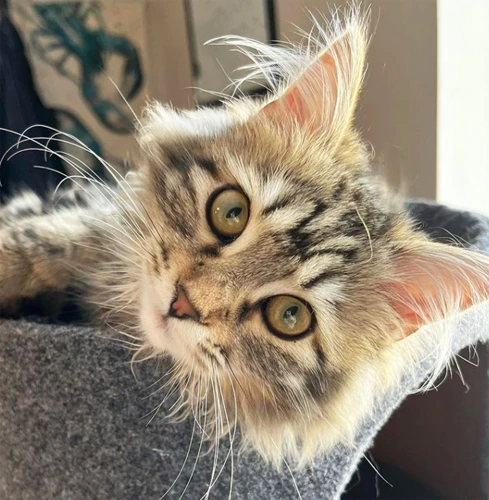
As much as we try to prevent dental problems in our American Bobtails, sometimes issues can still arise. Recognizing the signs of dental problems is crucial in ensuring the health and well-being of your furry friend. Keep an eye out for the following symptoms to catch dental problems early and seek treatment.
Bad Breath
One of the most obvious signs of dental problems in American Bobtails is bad breath. If you notice that your furry friend’s breath has an unpleasant smell, it may be an indication of an underlying dental issue.
Causes of Bad Breath:
- Poor oral hygiene: When the teeth and gums are not regularly cleaned, bacteria build-up can lead to bad breath.
- Dental infections: Infections in the mouth, such as gingivitis or periodontitis, can cause a foul odor.
- Diet: Your American Bobtail’s diet can also affect their breath. Foods with high levels of protein, such as fish or chicken, can cause bad breath.
- Other medical conditions: In some cases, bad breath can be a sign of underlying medical conditions such as diabetes or kidney disease.
If your American Bobtail has bad breath, it’s essential to take them to a vet for a dental check-up. The vet will perform a physical examination, which can detect dental problems that may be causing the bad breath. They may also recommend blood tests to check for underlying medical conditions.
Preventing Bad Breath:
To prevent bad breath in American Bobtails, it’s crucial to maintain good oral hygiene. Here are some tips to help you keep your cat’s mouth clean and healthy:
- Brush your cat’s teeth regularly using a cat-specific toothbrush and toothpaste.
- Offer dental toys and treats designed to help clean the teeth and massage the gums.
- Provide your cat with a well-balanced diet that meets their nutritional requirements.
- Take your cat to the vet for regular dental check-ups and cleanings.
By following these preventative measures, you can help keep your American Bobtail’s mouth clean and free from harmful bacteria, leading to fresher breath and better overall dental health.
Difficulty Eating or Dropping Food
Difficulty eating or dropping food can be a sign of dental problems in American Bobtails. Cats that experience pain while eating or have loose teeth may drop their food while attempting to chew. Additionally, cats with dental issues may eat more slowly than usual or avoid eating completely, which can lead to weight loss and other health problems.
If you notice your American Bobtail exhibiting any of these signs, it’s important to take them to the vet for a dental check-up as soon as possible. Delayed treatment can worsen dental problems and result in more serious health conditions.
Some other signs to look out for that may indicate dental problems in your American Bobtail include bad breath, excessive drooling, bleeding gums or loose teeth, and changes in behavior or mood.
Remember, proper dental care is crucial for the health and well-being of your American Bobtail. Consider adding regular brushing and flossing, scheduled dental check-ups, and proper nutrition to your feline’s routine. Dental toys and treats can also be helpful in maintaining healthy teeth and gums for your furry friend.
To summarize, difficulty eating or dropping food can be a clear indication of dental problems in your American Bobtail. Don’t ignore these signs, but seek immediate veterinary attention to ensure the dental health and overall well-being of your feline companion.
Excessive Drooling
Excessive drooling can be a sign of various dental problems in American Bobtails. If your cat is drooling excessively, it may indicate that your pet is experiencing tooth pain or has injured their mouth.
Other possible reasons for your American Bobtail’s excessive drooling could be gum inflammation or an infection in the mouth. It’s important to pay attention to any changes in your pet’s behavior and diet as well, as this could indicate a more serious dental issue.
Some of the ways you can identify if your pet is drooling more than usual are:
- Increased amount of saliva around the mouth or chin
- Wet spots on their bedding or cushion
- Difficulty grooming themselves as the saliva may cause matting of their fur
If you’ve noticed any of these signs, you should take your American Bobtail to the vet for a dental examination. Excessive drooling can cause dehydration, loss of appetite, and weight loss, which can have a severe impact on your cat’s health.
In conclusion, excessive drooling is a worrisome sign that could indicate a significant dental problem in your American Bobtail. It’s recommended that you consult your veterinarian as soon as possible to identify and address any underlying health conditions.
Bleeding Gums or Loose Teeth
One of the most obvious signs of dental problems in American Bobtails are bleeding gums or loose teeth. This can be caused by a number of factors, including periodontal disease (gum disease), which is a common condition in cats. Periodontal disease is a progressive condition that can lead to tooth loss if not treated promptly.
When your American Bobtail’s gums become inflamed or infected, they begin to bleed when touched. This is a sign that there is an infection in the gums and can lead to eventual tooth loss if not treated. The infected gums can also loosen teeth, which could eventually fall out. Other potential causes of bleeding gums or loose teeth include dental trauma or fractured teeth.
If you notice your cat’s gums are bleeding or their teeth are loose, it is important to make an appointment with your veterinarian as soon as possible. While dental problems can be painful and uncomfortable for cats, many are treatable if caught early.
To help prevent bleeding gums and loose teeth in your American Bobtail, it is important to establish a regular oral hygiene routine. This should include daily brushing and flossing, as well as regular dental check-ups with your vet. Providing your cat with the right dental toys and treats can also help promote healthy teeth and gums, while ensuring they get the proper nutrients in their diet can also play a significant role in their oral health.
Here is a table summarizing the signs of bleeding gums and loose teeth in American Bobtails:
| Signs of Bleeding Gums or Loose Teeth in American Bobtails |
|---|
| Red, swollen, or inflamed gums |
| Bleeding gums, particularly when touched |
| Loose or wobbly teeth |
| Difficulty eating or dropping food |
| Unpleasant breath or mouth odor |
If you notice any of these symptoms in your furry friend, it’s important to act quickly to ensure they receive the proper treatment they need to get back to optimal health. Don’t hesitate to contact your veterinarian and schedule an appointment to get your American Bobtail on the road to recovery.
Changes in Behavior or Mood
Cats have an incredible ability to hide discomfort and pain, making it difficult to detect dental problems. However, changes in behavior or mood can be a telltale sign that something is wrong. If your American Bobtail is experiencing tooth pain, they may become irritable, agitated, or lethargic. They may also stop grooming themselves, or become less social and affectionate.
Here are some behavioral changes to look out for in your American Bobtail:
- Increased Aggression: Tooth pain can make your American Bobtail more aggressive or easily annoyed. If your normally affectionate cat suddenly starts biting, hissing or growling, it’s possible they are experiencing dental discomfort.
- Lethargy: Your American Bobtail might become significantly less active than usual if they are experiencing tooth pain. They might not want to play or go outside, and they may seem weak or tired.
- Changes in Eating Habits: If your American Bobtail starts refusing their normal food, pawing at their mouth, or dropping food from their mouth while eating, it could indicate dental problems. They may also start chewing only on one side of their mouth, demonstrating discomfort on the other side.
- Withdrawal: If your once social and outgoing American Bobtail starts to withdraw and hide, it could be a sign of tooth pain. They might keep to themselves more often or avoid interaction with other people or pets.
- Positive Behavior: It’s not always the negative mood associated with dental problems that indicate dental pain. Some American Bobtails may seek more affection and cuddling when they are in pain or uncomfortable.
If you notice any of these behaviors or other unusual changes in your cat’s behavior, it could indicate dental problems. You should consult with your veterinarian to rule out other possible medical issues and to develop a treatment plan for your pet’s dental problems. Remember, maintaining your American Bobtail’s dental health is an essential part of keeping them happy and healthy.
How to Treat Dental Problems in American Bobtails
As much as you try to prevent dental problems in your American Bobtail, there’s always a chance that they will occur. In such a case, it is crucial to seek proper dental care to keep your furry friend healthy and happy. Here are some effective treatments that can be used to address various dental problems in American Bobtails. Remember: it is always best to consult with your veterinarian to determine the most appropriate treatment plan for your furry friend.
Tooth Extractions
Tooth extractions are sometimes necessary for American Bobtails with severe dental problems, such as advanced cases of periodontal disease or tooth decay. It is important to note that tooth extractions are always a last resort and are only performed when all other treatment options have been exhausted.
The Procedure
During a tooth extraction, the American Bobtail is given anesthesia to ensure they will not feel any pain. The affected tooth and surrounding area are then numbed. The veterinary surgeon will then use special equipment to loosen and remove the tooth.
Aftercare
After a tooth extraction, your American Bobtail may experience some discomfort and pain. Pain medication may be prescribed to help your cat manage this pain. Your cat may also need to eat soft food for a few days or weeks after the procedure.
Risks and Complications
Tooth extractions always carry some risk, such as excessive bleeding, infection, or nerve damage. However, these complications are rare and can be prevented with proper oral care and aftercare procedures.
Prevention
To prevent the need for tooth extractions, it is essential to take care of your American Bobtail’s teeth and gums properly. This involves daily brushing and flossing, regular veterinary check-ups, and a healthy diet with the right balance of nutrients to maintain healthy teeth.
| Advantages | Disadvantages |
|---|---|
| – Removal of severely damaged teeth can relieve pain and prevent further health problems. | – Tooth extractions are a last resort and may not be the best option for every case. |
| – The procedure is typically quick and straightforward, with anesthesia administered to minimize discomfort. | – Risks and complications are possible. |
| – Aftercare can help promote a comfortable and speedy recovery. | – Recovery and healing times can vary depending on the individual case. |
| – Regular dental care and preventative measures can help prevent the need for tooth extractions. | – There may be cost considerations for some owners, as tooth extractions can be expensive. |
In cases where a tooth extraction is necessary, it is important to follow the aftercare instructions provided by the veterinary surgeon to promote healing and ensure your American Bobtail’s comfort. With proper oral care and regular veterinary check-ups, however, many American Bobtails can avoid the need for tooth extractions altogether.
Root Canal Therapy
Root canal therapy is a treatment option that can be considered for American Bobtails with severe dental problems. This procedure involves removing the infected or damaged pulp inside the tooth and replacing it with a filling. Here are some important things to know about root canal therapy:
- Procedure: Root canal therapy is typically done in multiple appointments. During the first appointment, the veterinarian will numb the area around the affected tooth and create a small hole to access the pulp. The infected pulp will be removed and the inside of the tooth will be cleaned and disinfected. In some cases, medication will be placed inside the tooth to help clear up any infection. During the next appointment, the tooth will be filled and sealed.
- Benefits: Root canal therapy can save a damaged or infected tooth from needing to be extracted. This can help your American Bobtail maintain their ability to eat and speak normally, and can also help preserve the structure of their jaw and prevent further dental problems.
- Risks: As with any medical procedure, there are some risks involved with root canal therapy. Your American Bobtail may experience some discomfort or sensitivity after the procedure. In rare cases, the infection may not be fully cleared up and additional treatment may be needed.
- Aftercare: After root canal therapy, your American Bobtail may need to avoid chewing on hard objects or food for a short period of time. The veterinarian may also recommend a follow-up appointment to ensure that the tooth is healing properly.
It is important to note that root canal therapy is not always the best option for every American Bobtail with dental problems, and your veterinarian will be able to provide guidance on whether or not this treatment is appropriate for your cat. If you are considering root canal therapy, be sure to discuss the risks, benefits, and aftercare requirements with your veterinarian.
Oral Surgery
One of the treatment options for severe dental problems in American Bobtails is oral surgery. This method involves invasive procedures aimed at correcting or removing damaged or infected teeth, gums, or jawbones. The decision to perform oral surgery is usually made after a thorough evaluation by a veterinarian and consultation with the pet owner.
Here are some common oral surgery procedures for American Bobtails:
- Tooth Extraction: This procedure involves removing a damaged or diseased tooth from the American Bobtail’s mouth. Extractions are usually necessary when the tooth cannot be saved through other means such as root canal therapy. Tooth extractions in cats are typically performed under general anesthesia to minimize pain and discomfort.
- Gum Surgery: Gum surgery is a procedure that corrects problems with the gums such as gum recession, abscesses, and inflammation. Surgery might involve removing a portion of the gum tissue around a tooth to expose more of the tooth’s surface or to remove diseased tissue. Gum surgeries in American Bobtails require general anesthesia for the pet’s comfort.
- Jawbone Surgery: Jawbone surgery is a procedure performed to correct abnormal jaw alignment or growth issues. It might also involve removing diseased bone tissue or reconstructing damaged bones in the jaw. Jawbone surgery is a complex procedure, and pet owners should ensure that their veterinarian has sufficient experience in performing such procedures.
It is important to note that oral surgery for American Bobtails carries risks such as bleeding, infection, and reactions to anesthesia. As such, pet owners should work closely with the veterinarian to understand the potential benefits and risks of the procedure, as well as any special preparations needed prior to surgery.
Once the oral surgery is complete, American Bobtails require special post-operative care that may involve medication, feeding instructions, and regular veterinary checkups. Pet owners should be diligent about following their veterinarian’s instructions to ensure speedy recovery and to minimize any potential complications.
Antibiotics and Pain Medication
If your American Bobtail is suffering from a dental problem, antibiotics and pain medication may be prescribed by your veterinarian to manage the symptoms and help with the healing process. Antibiotics are used to treat bacterial infections that can occur in the mouth, while pain medication can provide relief from discomfort during and after treatment.
Antibiotics: Antibiotics are used to treat bacterial infections that can result from dental problems like gum disease, abscesses or infected teeth. The antibiotics prescribed will depend on the severity and type of infection. Commonly prescribed antibiotics for dental infections in American Bobtails include amoxicillin, clindamycin, and metronidazole. Antibiotics are typically given for seven to ten days, and it’s important to administer the full course of treatment to ensure that the infection is completely eliminated.
Pain medication: Dental problems can cause significant discomfort for American Bobtails. Pain medication can be prescribed to manage the symptoms of toothache or after dental procedures. Commonly prescribed pain medications include non-steroidal anti-inflammatory drugs (NSAIDs) like meloxicam or carprofen, and opioids like buprenorphine or tramadol. As with any medication, it’s important to follow your veterinarian’s instructions carefully, including the correct dosage and frequency of administration.
It’s important to note that antibiotics and pain medication are not a long-term solution for dental problems. They are used to manage symptoms and reduce discomfort while addressing the underlying issue. In addition to medication, it’s important to follow an appropriate treatment plan that may include professional dental treatment, daily dental care routine, and proper nutrition. Failure to address underlying dental problems could result in further complications and required additional medication or procedures.
| Antibiotics | Pain medication |
|---|---|
| Amoxicillin | Meloxicam |
| Clindamycin | Carprofen |
| Metronidazole | Buprenorphine |
| Tramadol |
Antibiotics and pain medication can be an effective short-term solution for dental problems in American Bobtails if used correctly. However, it’s essential to follow a comprehensive treatment plan to address the underlying issue and prevent further complications. Work with your veterinarian to develop a treatment plan that includes appropriate medication use, dental care routine, and balanced nutrition to ensure your American Bobtail’s dental health is maintained at optimal levels.
Conclusion
In conclusion, maintaining good oral health for your American Bobtail is crucial to their overall well-being. Hopefully, this article has provided you with valuable information on common dental problems in American Bobtails and how to prevent them.
Remember that daily brushing and flossing, regular dental check-ups, proper nutrition, and dental toys and treats are all effective preventative measures. Be aware of the signs of dental problems, such as bad breath, difficulty eating, excessive drooling, bleeding gums, and changes in behavior or mood, so that you can take prompt action if needed.
If your American Bobtail does experience dental problems, treatment options such as tooth extractions, root canal therapy, oral surgery, and antibiotics and pain medication are available. Don’t hesitate to consult with your veterinarian if you suspect a dental issue.
In summary, taking care of your American Bobtail’s dental health is an important responsibility as a pet owner. By following the preventative measures and seeking prompt treatment when necessary, you can ensure that your furry companion maintains a healthy and happy life.
Frequently Asked Questions
1. How often should I brush my American Bobtail’s teeth?
It is recommended to brush your American Bobtail’s teeth at least once a day to prevent dental problems.
2. Can I use human toothpaste to brush my American Bobtail’s teeth?
No, you should use toothpaste specifically designed for cats. Human toothpaste contains ingredients that are toxic to cats.
3. What should I do if my American Bobtail resists tooth brushing?
You can try using dental wipes or dental treats as alternative methods to maintain your cat’s dental hygiene.
4. Can feeding my American Bobtail dry food help with dental health?
Yes, dry food can help to remove plaque and tartar from your cat’s teeth during chewing.
5. What types of toys are good for promoting dental health in American Bobtails?
Chew toys and toys that require chewing can help to keep your cat’s teeth clean and healthy.
6. How often should I take my American Bobtail to the veterinarian for dental check-ups?
It is recommended to take your cat to the veterinarian for dental check-ups at least once a year.
7. What are the risks of untreated dental problems in American Bobtails?
Untreated dental problems can lead to serious health issues such as gum disease, tooth loss, and even organ damage.
8. Can I give my American Bobtail bones to chew on?
No, giving your cat bones to chew on can cause dental fractures and pose a choking hazard.
9. What are some signs that my American Bobtail is experiencing dental problems?
Some signs of dental problems in cats include bad breath, difficulty eating or dropping food, excessive drooling, bleeding gums or loose teeth, and changes in behavior or mood.
10. Can dental problems in American Bobtails be prevented?
Yes, daily teeth brushing, regular dental check-ups, proper nutrition, and providing dental toys and treats can help to prevent dental problems in American Bobtails.

